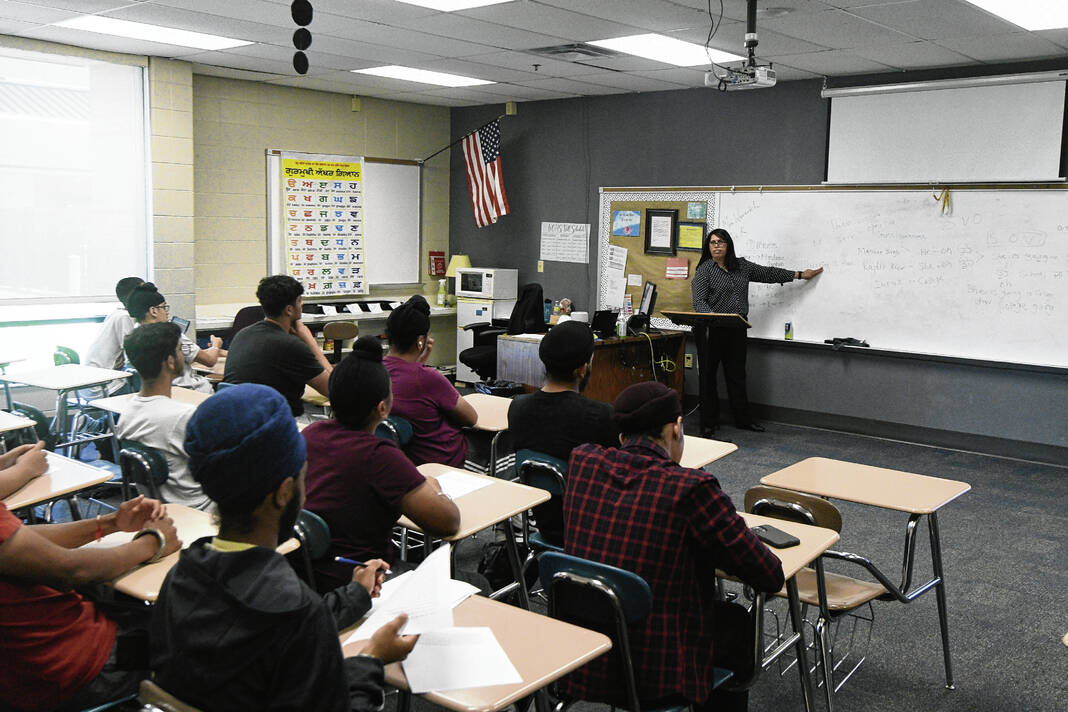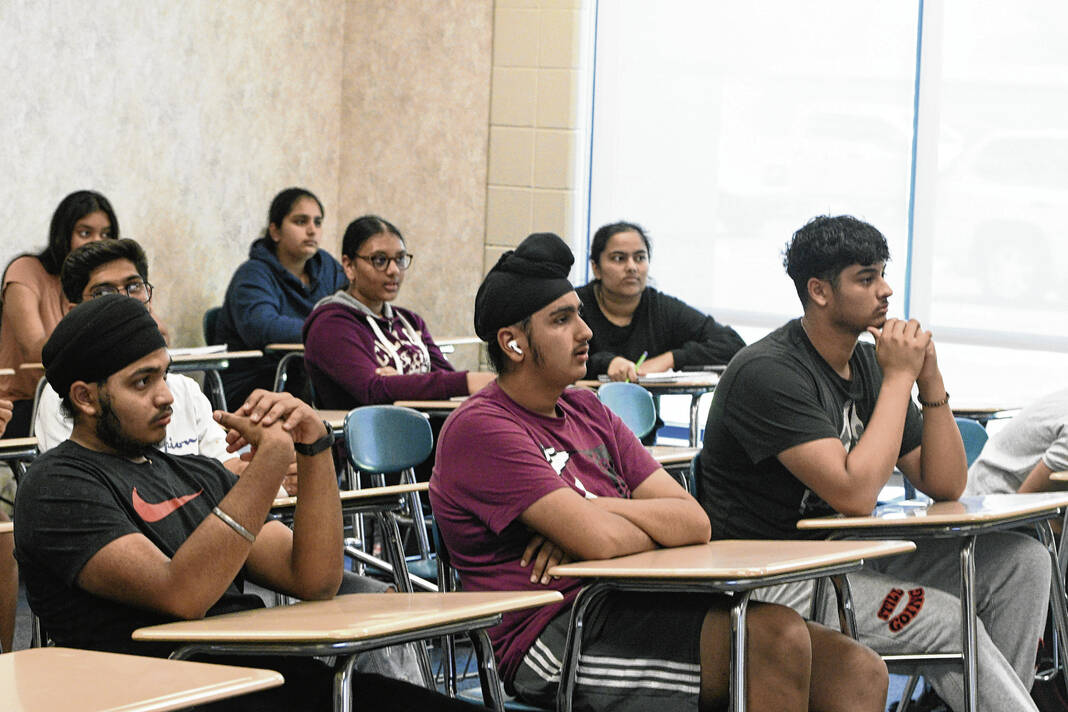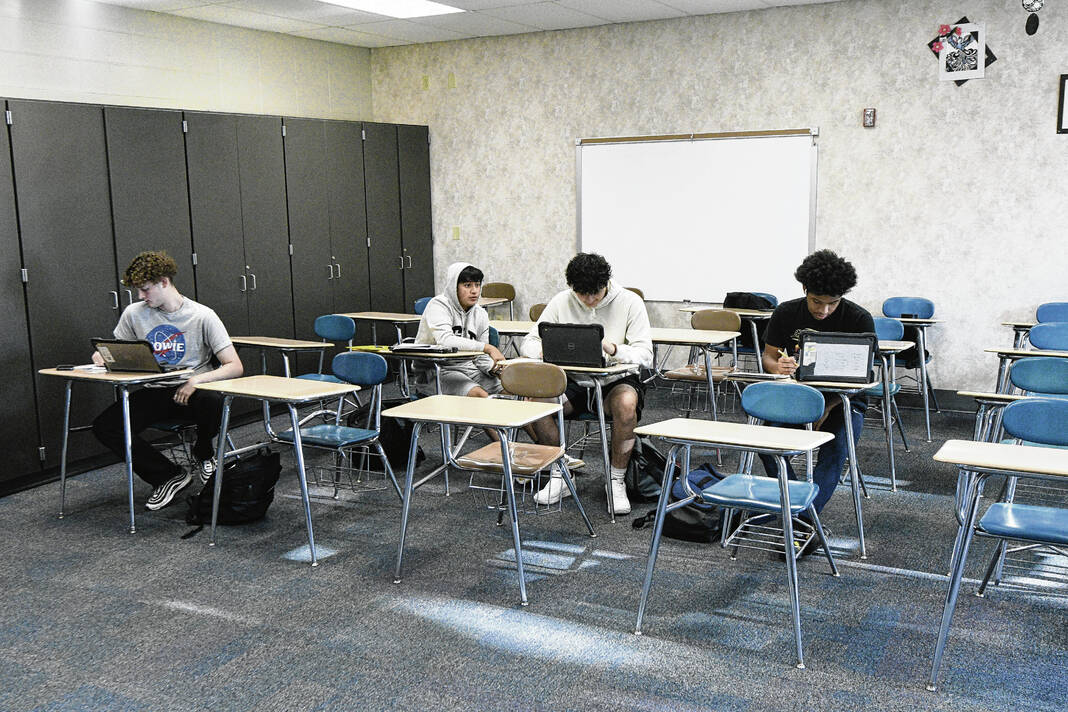Hola.
Bonjour.
ਸਤ ਸ੍ਰੀ ਅਕਾਲ.
These are common greetings heard at the start of modern language classes at Whiteland Community High School.
Spanish and French have long been offered but this is the first school year students can learn Punjabi. The language is native to western India and eastern Pakistan and the class is the first of its kind in Johnson County. The class might even be the first public high school Punjabi program in the Midwest, the class’s teacher, Kuldeep Waraitch, said.
“It’s a very proud thing for me and I’m proud of my students to be the first students in this program,” Waraitch said. “This is very exciting and I’m very thankful to (Superintendent Patrick) Spray for thinking of this program.”
Waraitch grew up in the Punjab region of India, and came to the U.S. in 1990. She lived and taught in the New York City area for 16 years, before moving to Johnson County in 2006. Locally she has been an English Language Learners, or ELL, instructional assistant, and worked with students from Punjab and other places like Myanmar, Ethiopia, Mexico and China who were trying to get a better grasp on the English language.
While not all students who speak a foreign language are in the ELL program, more students in the Clark-Pleasant Community School Corporation speak Punjabi either as a primary or secondary language than all other non-English languages combined. The number of students in the school district who speak the language, 657, is almost triple the next language on the list, Spanish, which 231 Clark-Pleasant students speak, according to data from the district.
For some Punjabi students, the class provides an opportunity to learn to read and write the language they have known how to speak for years. Such is the case with sophomore Bavandeep Singh, who was born in India but came to the U.S. when he was six months old.
Although the class has only been underway since the school year started, students have already learned much of the 41-letter alphabet, along with greetings and pronouns, he said.
“I’ve been speaking Punjabi so many years but never knew how to read it. I went crazy searching on Google for apps that teach you and I couldn’t find it. The school finally had the opportunity. I was so happy and I decided to take it,” Singh said. “I hope by the time I’m done I know how to read and write most of it.”
Other students, like sophomore Mandir Gill, wanted to connect more with his parents.
“My parents always wanted me to learn how to write and read. I struggle with that and I wanted to connect with the culture,” Gill said.
Karanjot Singh Kailay, an 11th grader, said he wanted to learn more about his lineage. The Sacramento, California native isn’t from India, but visits every few years, and wants to understand street signs and newspapers when he next returns.
“A lot of us are born here but don’t know too much about our lineage,” Kailay said. “This way, we can learn more about it and communicate our language with family who don’t know English.”
Of Waraitch’s roughly 65 students, nine of them aren’t Punjabi, and took the class to learn a new language.
Carson Williams, a junior, partly decided to take the class because of the growing Punjabi population in the school community.
“I definitely say out of usefulness,” Williams said. “It’s the best language to learn because of the increasing population, it’s useful in everyday life. It’s a great learning experience because I’d never seen a language like this be taught. It’s definitely unique.”
Sophomore Derrick Taylor said he hopes he can speak and write full Punjabi sentences before the end of the school year.
“I was interested in learning a different language instead of French or Spanish. Everything is switched around and the alphabet is more difficult to learn, but it’s easier when you start having the class,” Taylor said. “If I ever have Punjabi friends and want to talk or go to a different country, I can speak Punjabi.”










